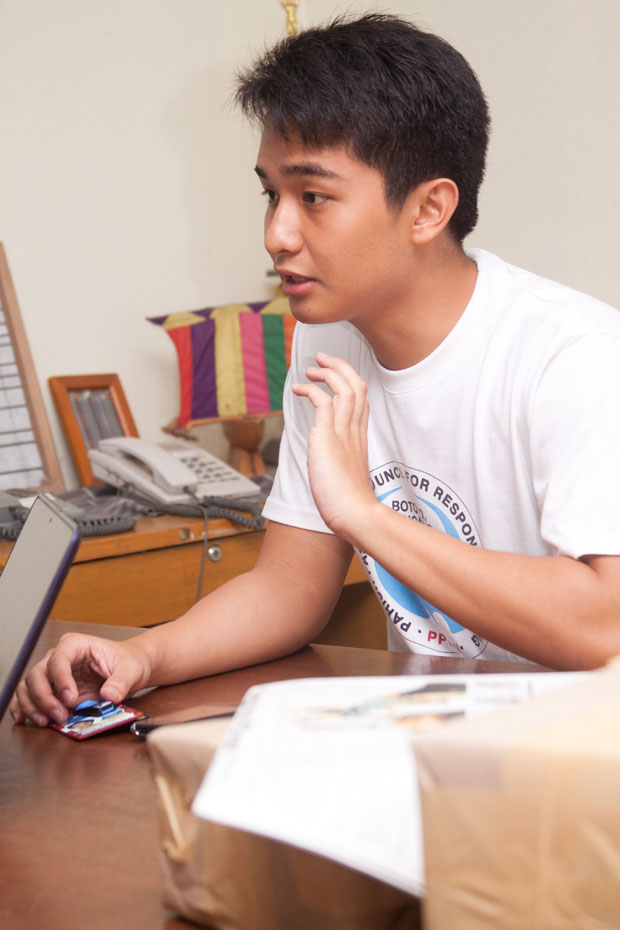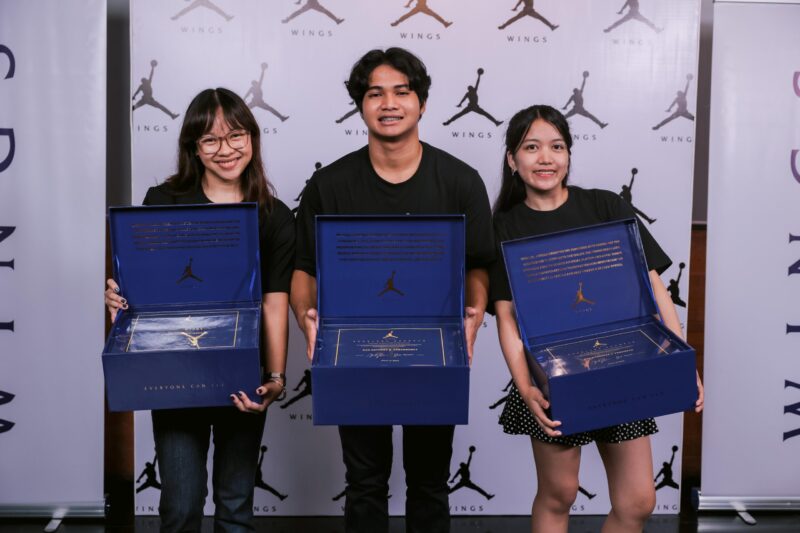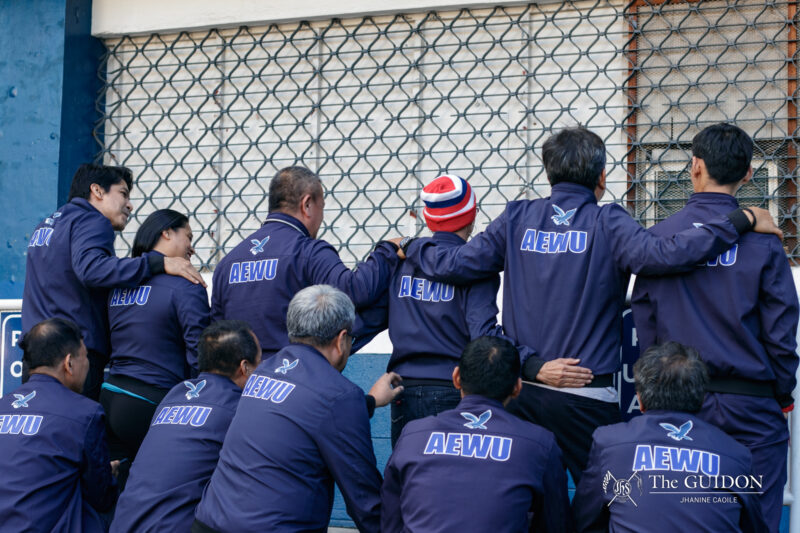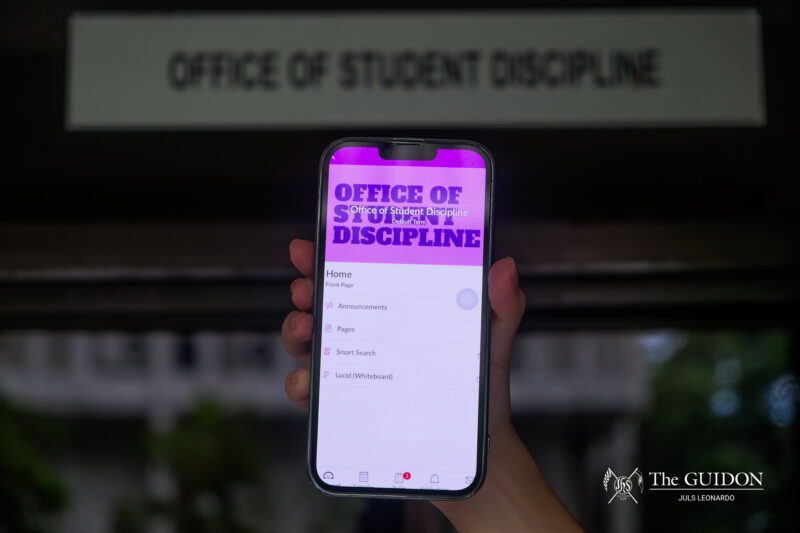
A call for involvement. Sanggu appeals to the student body to be more involved in the actions and programs they create. Photo by Ean L. Dacay
IN AN effort to introduce greater representation, the Sanggunian is pushing for amendments to the Constitution of the undergraduate students of the Ateneo de Manila University’s Loyola Schools.
After a series of constitutional conventions, a plebiscite will be held to decide on the ratification of the proposed Constitution. The plebiscite is scheduled for February, alongside the Sanggunian General Elections.
Amendments to the Constitution were last ratified in 2005, after a failed plebiscite in 2007 and the absence of one in 2009.
According to Sanggunian Vice President and Committee on Constitutional Review (CCR) Chairperson Gio Alejo, the Constitution contains the Bill of Rights of a Loyola Schools student and the structure and policies of the Sanggunian.
“The Constitution is the basis for the regular student to uphold his student rights… It enables the students to participate more actively in their student government,” he said.
Opening up the Constitution
Senior School of Humanities Central Board (CB) Representative and CCR Co-Chairperson Nicole Reyes said that they are trying to open up the Constitution “to allow students to be able to participate more in what Sanggu does.”
There are four major constitutional amendments: increased sectoral representation, the establishment of the House of Representatives (HOR), a widening of the Executive Coordinating Assembly’s (ECA) power, and the simultaneous appointment of Sanggunian and Commission on Elections (Comelec) officers.
Presently, only two groups are represented sectorally: the Council of Organizations of the Ateneo (COA) for members of student organizations, and the Ateneo Resident Students Association (ARSA) for dormers.
However, Alejo pointed out that a provision in the 2005 Constitution actually states that the CB can accredit sectors willing to join. “People [just] don’t know this,” he said.
The sectoral council representation, in which sectoral groups can file for candidacy, will follow the party list system in the country.
Meanwhile, elected and appointed block and course representatives would comprise the HOR or the Lower House.
“Right now, we just do it based on the resolution. Putting [it down] in the Constitution… would pave the way for a regular meeting with our representatives, not just by school, but as a plenary,” Alejo said.
Another proposed amendment is to change the ECA’s role from being Sanggunian’s highest coordinating body to having the role of the Central Board as a governing and policy-making body.
The ECA is composed of the Sanggunian president, vice president, secretary–general, finance officer, school chairs and secretary-treasurers and department chairs. This assembly is the coordinating body for scheduling and planning the Sanggunian’s various programs and projects.
However, the proposed presence of CB representatives in both the CB and the ECA raised issues on double voting. In the end, it was decided that both bodies retain their current roles.
Meanwhile, the Comelec commissioners’ term has also been proposed to be moved to the first day of summer semester up to the last day of second semester.
Not “We, the Sanggunian…”
Several steps were undertaken prior to the pre-final version of the Constitution. A prototype was made by the CCR last year and the Committee on Constitutional Amendments in 2009.
The Ateneo Statistics Circle also surveyed the student body on the matter; the results were taken into consideration. The CCR then began drafting the Constitution, which the CB deliberated upon and amended.
Reyes stressed student involvement in the whole process. “It’s really about what the student body wants the student government [to do] for them, because even if you read the Preamble, the Preamble begins: ‘We, the undergraduate students of the Loyola Schools.’ It doesn’t say, ‘We, the Sanggunian.’”
Fundamental, not structural
Despite the broadening of representation in the proposed amendments, Steffi Sales, president of the political science student organization The Assembly, believes that the Sanggunian must not merely focus on structures. “[Engaging the student body is] not going to be solved merely by a change or a reform in structure,” she said.
She believes that the Sanggunian could work with the system they already have, but pursue changes in the officers’ mentality. “They need to be able to work with current mechanisms… to make sure that they really get the representative views from the student body,” she said.
“If they are able to do that, then they’re able to know what exactly the student body needs and what exactly their efforts should reflect.”
With reports from Gett P. Baladad
Editor’s Note: Steffi Sales is a writer for the Inquiry section of The GUIDON. She has no involvement with The GUIDON’s News section.







